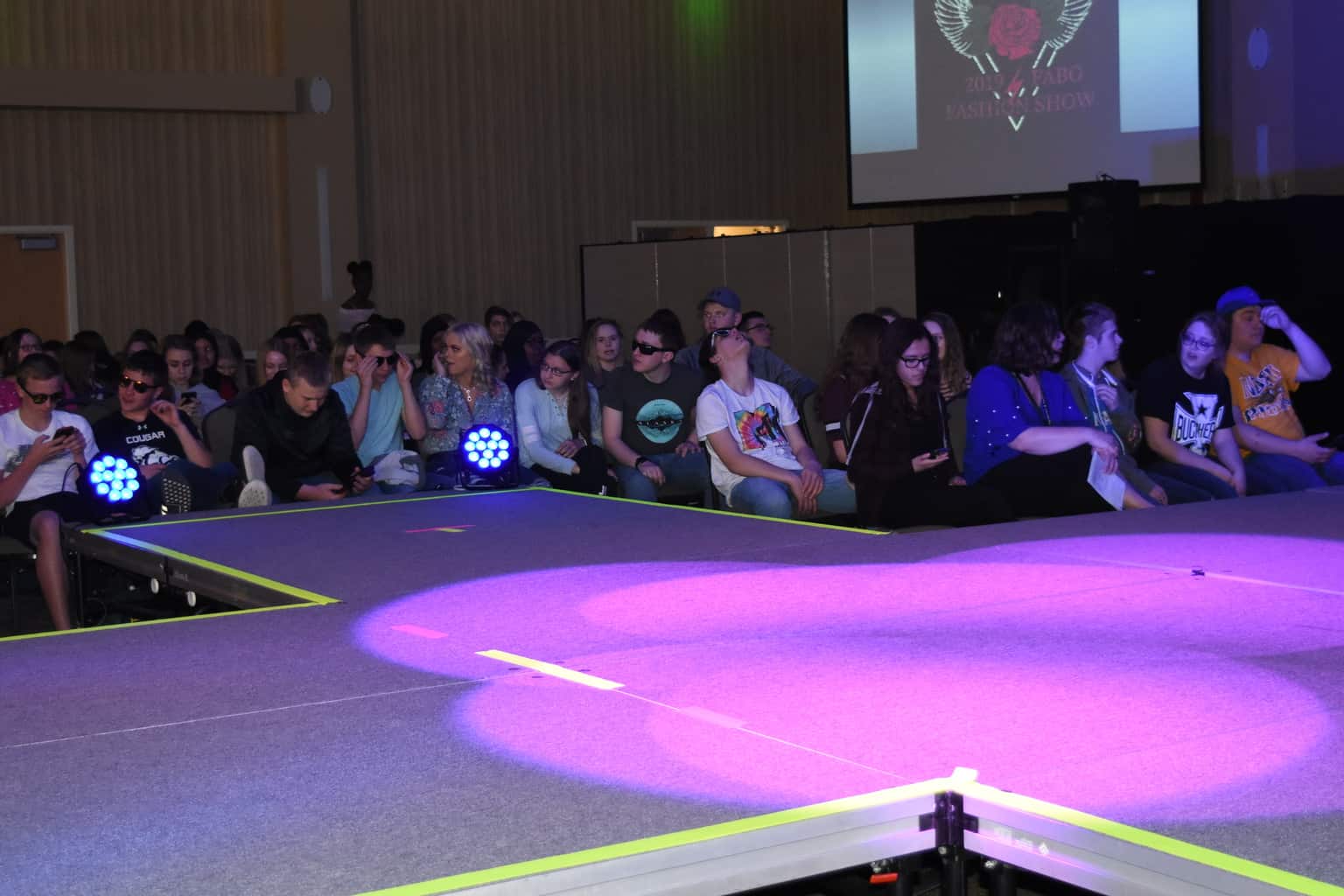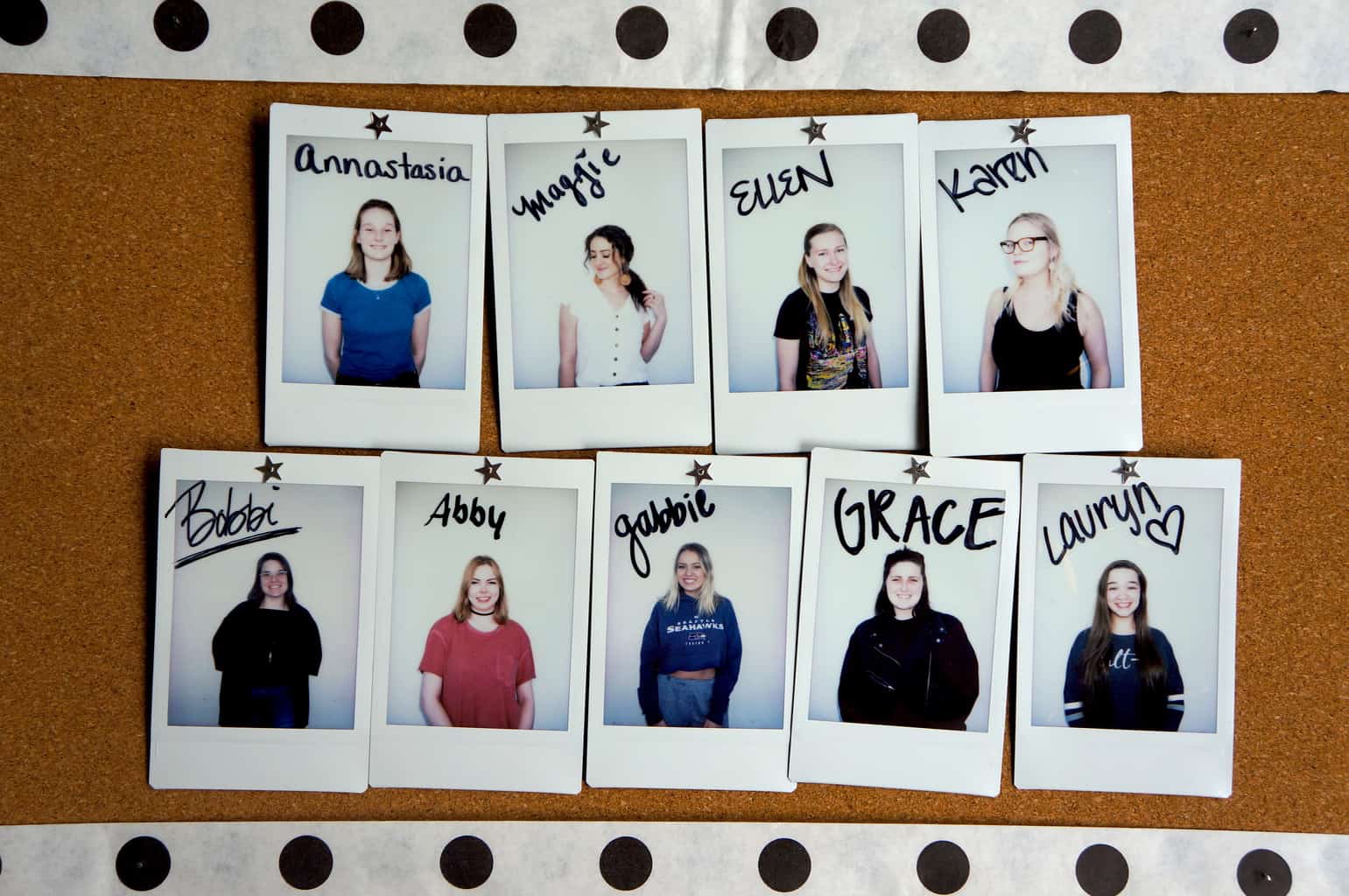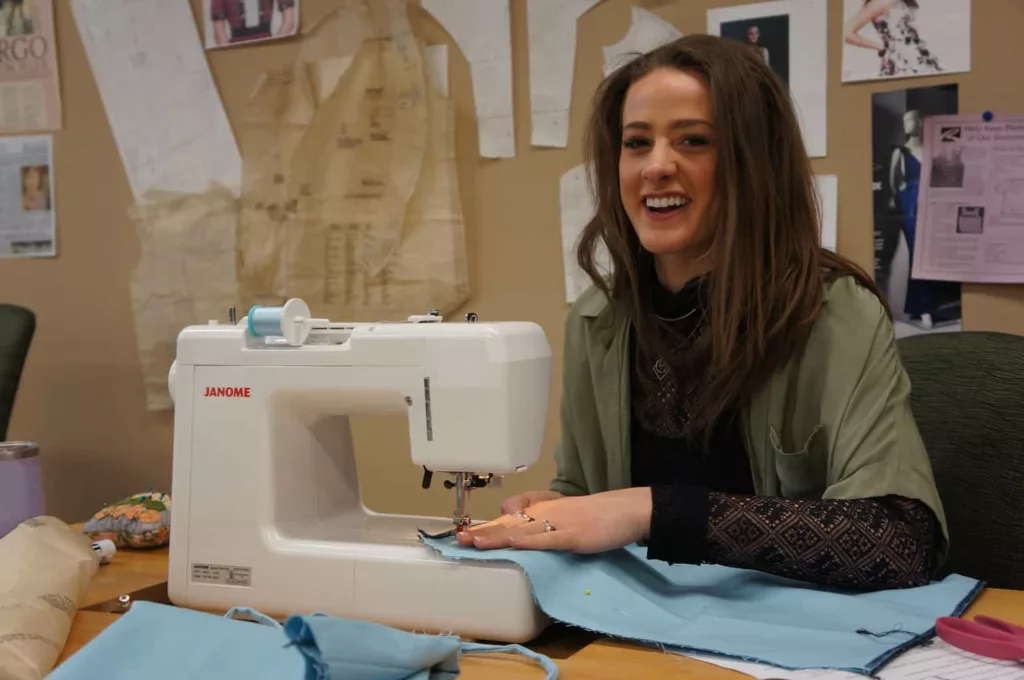From tailored suits to flowing dresses, the perfect fit can be hard to find. But when clothes are made by the very hands of the person that will wear them, there’s an opportunity for an intimate consideration of every bend and curve. The result is an outfit as unique as the body wearing it and the mind that designed it.
As the semester comes to a close for a handful of young designers at NDSU, the clothes they’ve been working on tirelessly were finally put to the test in a runway show orchestrated by the Fashion Apparel and Business Organization (FABO). Over 80 models took the stage to display their own works as well as looks put together by businesses from Downtown to West Fargo and everywhere in-between.

Before they hit the stage though, there was a whole lot to be learned. For those with the courage to thread a sewing machine and inspiration to see an outfit before it’s presented to them at a store, the process all starts with measurements. A study of the body, both upper and lower, was required before the students deal with fabric.
“All semester we studied how things fit the body,” said Maggie Barrett, a student in the fundamentals of apparel construction class at North Dakota State University and co-program coordinator for the FABO Runway Show. “So, on the first day of class we took several measurements of the arm, leg, back and neck, just a lot of measurement, and we translated that into patterns.”
After measurements comes the fabric; from yellow plaid, black and white gingham, star-studded black shear and soft baby blues. Here’s a further look into the personalities that reflected on each one-of-a-kind outfit.
Students of Style

Where do you look for inspiration?
Gabbie: ManRepeller
Ellen: The Sartorialist
Grace: New York street style and inspiration boards on Pinterest
Bobbi: David Bowie
Karen: Who What Wear
Annastasia: Lirika Matoshi
Growing up, who was one person that influenced your style?
Gabbie: My mom has always allowed me to wear whatever I pleased and was a huge influence on my love for shopping.
Annastasia: My neighbor and daycare lady, Bonnie. She showed me that no matter the occasion, you should look put together. I’ve recently taken her style and added it to my own.
Maggie: Miley Cyrus because she never cared what anyone thought.
Ellen: Blair Waldorf (and Serena) definitely influenced me throughout high school which was when I actually started wearing outfits and not just pants and shirts. She influenced me because I loved how classic and sophisticated she was but never had a boring outfit.
Lauryn: Audrey Hepburn’s timeless style. Her glamorous, vintage looks with symmetry and grace made me feel at ease and inspired. I love historical fashion, so I like to make/find pieces that bring history to the modern era.
If you had to design an outfit without using fabric, what material would you use?
Maggie: Anything recycled
Grace: 60s wallpaper
Bobbi: Palm tree fronds
Karen: Newspaper and bubble wrap
Annastasia: Milk carton plastic melted and reformed
The Perfect Fit
Jumping from project to project as hurdles presented themselves, Assistant Professor Ann Braaten’s (pictured above) construction expertise was a priceless tool for the young designers. As an Apparel, Retail Merchandising and Design faculty member, Braaten teaches one of the only classes offered where students sew for themselves.
“Our teacher helped us alter the clothes to fit our body specifically,” said Barrett about Assistant Professor Braaten. “In apparel construction we take it upon ourselves to go deep into measurements and make clothes that are going to fit perfectly.”
Having the ability to try and retry a fit is truly a luxury. It allows designers to translate the clothes and patterns they are inspired by into pieces that respond to the individual body. Issues like length and width become mere numbers, allowing the designs to shine and solving an age-old problem of ready-to-wear clothing.
“American sizing is based on standards developed in the 70s and our population has become so much more diverse since then,” said Assistant Professor Braaten. “It is a challenge. We make clothes to fit the most people, but then when you don’t fit them, you feel different.”
Where sizing presents dilemmas for ready-to-wear, personal styling triumphs with a similar focus on each individuals body-type and personal style. As the assistant manager at Kindred People in Downtown Fargo, Maggie Barrett is no stranger to the personal touch that goes into filling local stores with clothes for all types of people.
“Any boutique you go into in downtown Fargo, there’s going to be somebody there who has some sort of experience in personal styling,” said Barrett. “It’s all about looking at people’s styles and body types and then picking clothes that adapt to that and correspond well.”
In addition to working scrupulously on their respective dresses, jumpers, and suits, some student designers working with FABO were put to the test to get everything arranged before the big day. With a stacked model lineup, each person required scheduling for hair and makeup, provided by Josef’s School of Hair Design.
They were also fitted for looks put together by local boutiques such as Mint + Basil, Kindred People, Halberstadt’s, Leela and Lavendar, Willow District, Violet Vintage, Blue Daisy Boutique, Prim Rose Boutique, among others.
With influences ranging from popular culture to downtown boutiques, each student imparts their unique take on the world of Fargo fashion. Some may only make clothes for themselves, others will create lines for the masses, but they will all certainly appreciate the time and effort it takes to transform fabric into living, breathing fashion.
The following images were captured by Andrew Stone Photography. Check out more of his work on Instagram.


